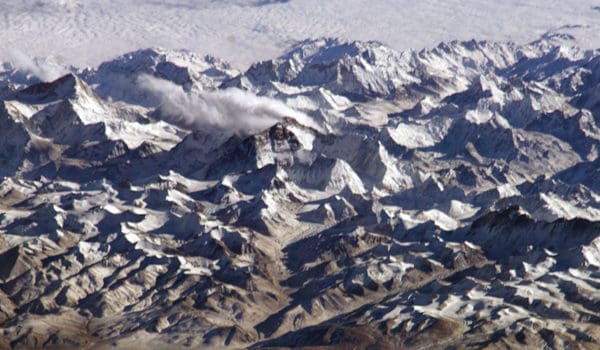Two new projects were accepted in 2012 by the Research Council of Norway under a collaboration program with India on climate research.


Extended knowledge on hydrologic sensitivity to the aerosol and cryosphere interaction
The HyCAMP project (see below) will enable a series of activities designed to raise the current level of understanding regarding the hydrologic sensitivity in the Hindu Kush, Karakoram and Himalayan (HKKH) mountain system to interaction between aerosols and the cryosphere. The project will also extend that knowledge to implement improved hydrologic forecasting for Norway.
The aerosols in question are “light absorbing aerosols” (e.g. black carbon) that can darken snow, increase the amount of energy absorbed, and thus enhance melting. The hydrologic sensitivity is therefore a result of increased melt (e.g. more rapid loss of water storage) of snow due to the increased energy absorbed.
Water resources are central to Norway’s renewable energy market. Aerosol sources for Norway are predominantly remote, so the emphasis on the Norwegian side of the study will be to examine the interaction of hydrologic systems with transport, deposition and radiative effects of aerosols.
HyCAMP – Hydrologic sensitivity to Cryosphere-Aerosol interaction in Mountain Processes – is coordinated by senior scientist John F. Burkhart at NILU.
Collaborating institutes in India are the Indian Institute of Technology both in Kharagpur and in Kanpur, while in Norway, the collaboration involves the Department of Geosciences at the University of Oslo and Statkraft. Project duration is three years.
Climate change impacts on Indian hydrology systems
NORINDIA (Climate Change and its Impacts on Selected Indian Hydrological Systems using Earth System and High-Resolution Modelling) is coordinated by the Bjerknes Centre for Climate Research in Bergen, Norway. Senior scientist Yvan Orsolini at NILU coordinates a work package on further understanding and quantifying the role of snow and surface processes on the Indian summer monsoon.
The importance of the springtime Eurasian or Himalayan snow cover for modulating the onset or intensity of the Indian summer monsoon remains controversial, despite having been proposed over a century ago. State-of-the-art coupled ocean-atmosphere forecasts will be specifically designed to isolate the impact of snow upon the monsoon variability. Albedo change due to dust and soot deposed in snow and glaciers in the Eurasia/Himalayan region is also an important topic in the perspective of global change, which will be also addressed in this project.
India is prominently vulnerable to climate changes and its impacts. The monsoon variability has a large impact on access to water for the communities living there. The existing state-of-the-art general circulation models are yet to be fine-tuned to resolve the complexities of the Indian summer monsoon and other hydrological processes on regional scales.
The project will focus on climate change and its feedbacks on hydrological processes, monsoon cycle changes and their impacts on water resources.
Collaborating institutes in India are the Energy and Resources Institute TERI in Delhi, the Indian Institute of Tropical Meteorology in Pune, and the Centre for Mathematical Modelling and Computer Simulation in Bangalore. In Norway, the collaboration involves the University of Bergen and the Department of Geosciences at the University of Oslo, as well as SN POWER HOLDING AS.
The duration of the project is 3 years.
